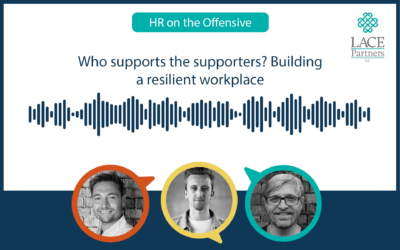We asked Rachel Mawson from our Adoption Practice to give us a quick explanation on the difference between ‘managing change’ and ‘managing adoption’, as this is something we’re often asked at LACE HQ by clients or when attending events. Rach gives us her insight in the latest LACE Partners blog below.
For the past five years, or so, the term Adoption has been slipping into the vernacular of project and programme professionals; specifically in relation to change management and often in reference to IT. Interestingly, this year Gartner recognised a new category of technology “Digital Adoption Solutions (DAS)” that “assist users with complex business processes, infrequently performed tasks, administration support and the critical change management activities.” (Gartner – Digital Adoption Solutions Article, May 21, 2019).
Naturally, if Gartner recognise the term it must be real. But how can we explain it without sounding like another piece of consultancy jargon that someone uses to make themselves sound like they know what they are talking about – leaving a sea of blank faces in their midst?
My theory: you need to manage change as a pre-cursor to successfully managing adoption, but one is more important than the other.
So let’s get to it. What is the difference?
Change management typically focuses on the change impact related to a specific event and what needs to be done to ready people for the change and the support they need within close proximity to the change happening.
For example, Company A is implementing a Human Capital Management (HCM) platform from day x. In this scenario what people need is an understanding of what the change will mean for them and how they need to use the technology going forward. Will they use the HCM platform to book leave, view their pay, record their objectives? Practically speaking, what this means is a pre-launch campaign on what is changing and why, and a launch campaign when the technology is live with some heightened support for users for four to six weeks post-launch.
Success might be measured in number of logins from day x.
Adoption focuses on the activity and infrastructure needed to embed the ‘change’ into the fabric of an organisation and the way people work.
Let’s use my same example. Company A is launching a new HCM platform. The introduction of this platform now introduces an extensive amount of self-service for employees and manager, as well as the introduction of a number of new ways to complete cyclical activities for the organisation; absence, pay, performance, etc. While you still need the initial change awareness activity the launch day itself is really just the beginning. For the platform to be truly adopted employees and managers need to fundamentally change the way they work.
This behavioural change will not occur overnight, and four to six weeks of heightened support won’t reinforce the longer term behaviour change needed to support the use of the platform – it will help but it’s not the end. The focus on adoption means that dedicated support must be offered at relevant times of the year, not just at launch, to support, for example, objective setting. The way employees and managers get support must be continually reinforced as well as improved. HR must be equipped and supported to make continual improvements to the service they offer, supported by the platform.
Adoption means looking at what you will be doing in three, six, twelve months to support the transition.
Success is not measured in login; logins don’t equal usage. And usage doesn’t equal adoption.
Change and adoption co-exist but it is the emphasis on the adoption that is often forgotten perhaps because it is harder and takes longer.
If you would like to talk about how your business could be supported by Rachel or a member of her team, or you’d like to discuss the differences between ‘change’ and ‘adoption’, then reach out to us on +44 (0) 208 065 0310, connect with Rachel on LinkedIn, or email us at info@lacepartners.co.uk.
Further reading – Digital Adoption Solutions – what you need to know ahead of time…






